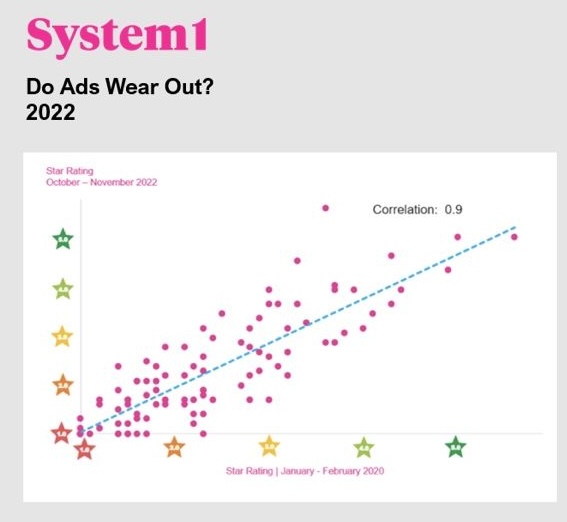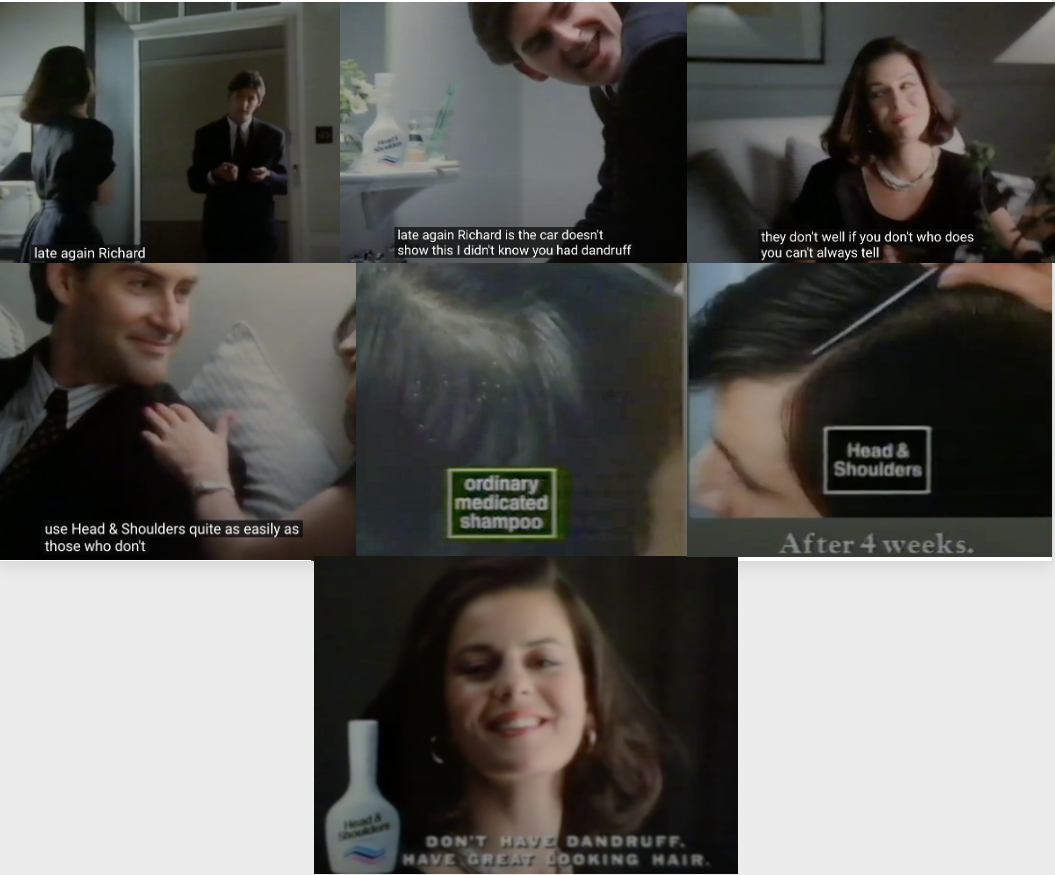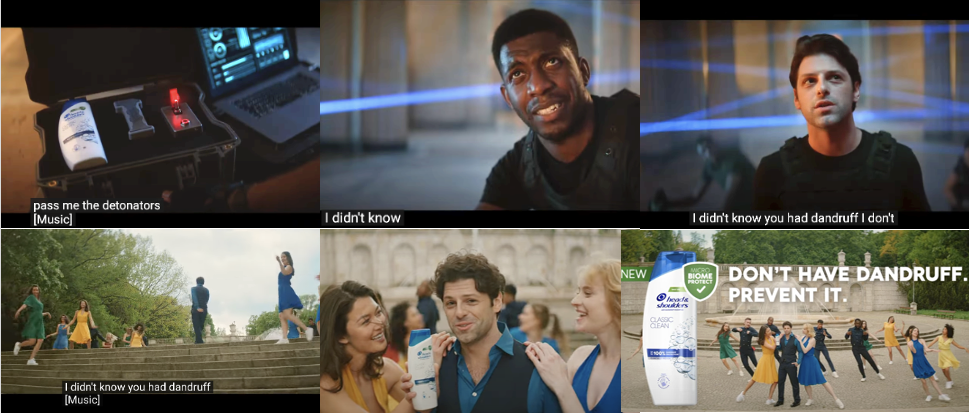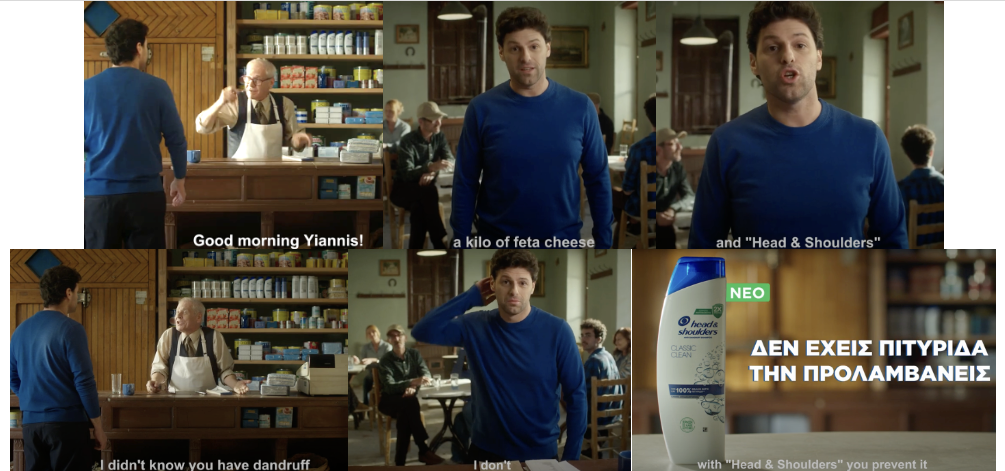My jaw dropped when watching a Head & Shoulders ad during the Euros soccer tournament last week. A hunky looking guy is asked “I didn’t know you had dandruff?” by someone who spots a bottle of Head & Shoulders in his bag. “I don’t,” he replies confidently, the idea being that regular use of the shampoo prevents him from getting dandruff. Why was I so surprised? Because the ad was an evolution of the campaign I ran back in 1990, when I was brand manager of Head & Shoulders UK at P&G. In other words, the campaign has been running for over a third of a century! And the fact the brand has grown to become “The world’s number Nº 1 shampoo” (Nielsen) suggests that the campaign has been effective.
In this campaign we look at some learning from the longevity of the Don’t campaign.
1. Stick with a winner
The first learning is the importance of sticking with a creative campaign if you manage to hit gold and produce a winner. This can be hard to do, given the temptation for brand teams to seek newness, especially when there is a change of marketing director. “Typically, over the last decade, it’s been marketers themselves calling for new campaigns. It was marketers pursuing novelty above effectiveness,” commented Poker Stars’ media director Ian Mc Grath, in a recent Linked In post (1).
Ian went on to use data from System 1 to support the case for consistency (see below). This research shows that ads had the same level of effectiveness two and half years on from the initial airing. Wearout, it seems, is not an issue. I posted on this subject a couple of years ago, showing that Budweiser’s Wassup campaign was still a high performing ad 20 years on from when it was launched. To note, here we are talking about individual ad executions, not just campaigns.

2. Consistent campaign idea
If you are fortunate enough to have an effective campaign you want to keep running, the first task is to identify the key elements to keep consistent. The 1990 Head & Shoulders Don’t campaign (2) had the following key elements (see below):
- 1. Spotting the bottle: the first character, Richard, spots a bottle of Head & Shoulders (having gone to the bathroom to clean up)
- 2. The challenge: the bottle prompts the character to ask, “I didn’t know you had dandruff?“
- 3. Confident reply: the Head & Shoulders user confidently replies, “I don’t!”
- 4. Shoulder brush: she explains it’s easier to spot those who don’t use Head & Shoulders, brushing flakes of the non-users’ shoulder!
- 5. Side-by-side demo: this being a vintage 1990 P&G ad, we see a scalp washed with an ordinary medicated shampoo (flakes) and one washed in Head & Shoulders (flake free)
- 6. End-line: Don’t have dandruff. Have great looking hair
The core campaign idea of the challenge and confident “I don’t” reply were the key elements selected to stay consistent. In contrast, the team decided to ditch the side-by-side demo and the brushing of flakes of the non-users’ shoulder. Both these elements could feel a bit dated and over the top if used today.
An interesting evolution is the end-line. “Don’t have dandruff” was retained. The second part of the end-line, “Have great looking hair”, was important back when I worked on the brand as the brand had a perception of being bad for your hair. There was need to communicate that the shampoo left your hair looking good, a message reinforced by launches of a frequent use and then a 2-in-1 version. However, once the brand image on hair look improved, the great looking hair part of the end-line could be dropped.

3. Freshness of execution
Fast forward to the 2024 version of the Head & Shoulders Don’t campaign (3) and we have the consistent core elements described above: the spot, the challenge and the confident response of “I Don’t”. What we also have is a load of freshness in terms of execution. The new ad is a humorous, tongue-in-cheek take on modern movie tropes. We have a version of Mission Impossible, for example, where the Head & Shoulder’s bottle is a bomb defusion box (below). Another vignette is inspired by the dancers of La La Land.
As mentioned earlier, the need to reassure on good looking hair is less today. Therefore, the end-line now has a different second part: “Don’t have dandruff. Prevent it”. The focus here is on encouraging regular use of Head & Shoulders as your main shampoo, not just to solve a problem once you have dandruff.

4. Spread the success
Whilst researching this blog, I came across another Head & Shoulders ad (4). This one was used by P&G CMO Marc Prichard in his keynote talk at Cannes (look out for an upcoming post on this talk). The ad comes from Greece and is a great example of how to “spread the success” by rolling out an effective campaign to as many markets as possible. Here again, we see fresh consistency in action. We have the same three core campaign elements (bottle spot, challenge, response). And we even have the same actor. Local fresheness comes from setting the ad in a Greek village store, where the elderly store keeper is the one doing the questioning. Interestingly, the set-up here is encouraging people to have the confidence to ask for the brand in store, which is maybe an issue in the Greek market.

In conclusion, the Head & Shoulders Don’t campaign is a masterclass in how to balance consistency of core campaign idea with freshness to update and stay relevant.
Sources
(1) Linked In article on lack of wear-out
(2) 1990 Head & Shoulders Don’t ad
